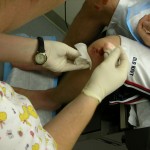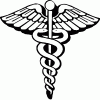Top 10 Medical Reasons Why People Visit Doctors

Just like it’s important for store owners to know which merchandise customers buy the most, it’s important for doctors and other medical professionals to know which conditions patients most often want treated. This knowledge can help a medical staff allocate resources and be prepared to answer questions, provide treatment and keep informed of the latest studies and techniques associated with their patients’ needs. Luckily, the world-renowned Mayo Clinic recently made these tasks easier when it published the results of a study that gathered data on 142,377 patients in Olmsted County, Minnesota between the years of 2005 and 2009 to determine the medical reasons why people most frequently visit the doctor. Here are the top 10 conditions the study found:
10. Diabetes
9. Headaches/migraines
8. High blood pressure
7. Chronic neurologic disorders
6. Anxiety, bipolar disorder and depression
5. Upper respiratory conditions (excluding asthma)
4. Cholesterol problems
3. Back problems
2. Joint disorders/osteoarthritis
1. Skin disorders (including cysts, acne and dermatitis)
The results were a bit surprising. None of the top three conditions are of the chronic, life-threatening variety (e.g., diabetes and heart disease) that accounts for such a high percentage of healthcare costs in the United States.
Although around 25 million Americans are diabetic and another 80 million or so have “prediabetes” (meaning a high enough blood sugar level that they are likely to develop type 2 diabetes in 10 years or less), diabetes was only the tenth most common reason to visit a doctor in the study.
Likewise, although there are 26.5 million non-institutionalized Americans suffering from heart disease, the conditions that contribute to it — such as high blood pressure and high cholesterol — didn’t rank in the top three reasons.
Skin disorders were far and away the most common reason to visit a physician, with almost half (42.7%) of the sample population seeking medical attention for their skin during the five-year span. According to the study, the type of skin disorder varied by the age of the patient. Younger people typically sought help for acne or a skin rash, while older people more often had a pre-cancerous skin lesion.
In fact, age played a significant part in the overall study results as well. Seven of the top 10 conditions increased in occurrence with age.
Knowing such details, especially when tied to non-life-threatening problems, can help medical professionals identify possible inefficiencies in treatment that, if corrected, could reduce the number of visits per patient, cutting down on costs and freeing up time to see more at-risk patients.
(Sources: Mayo Clinc, Motley Fool, MinnPost, Centers for Disease Control and Prevention, National Heart, Lung and Blood Institute)







